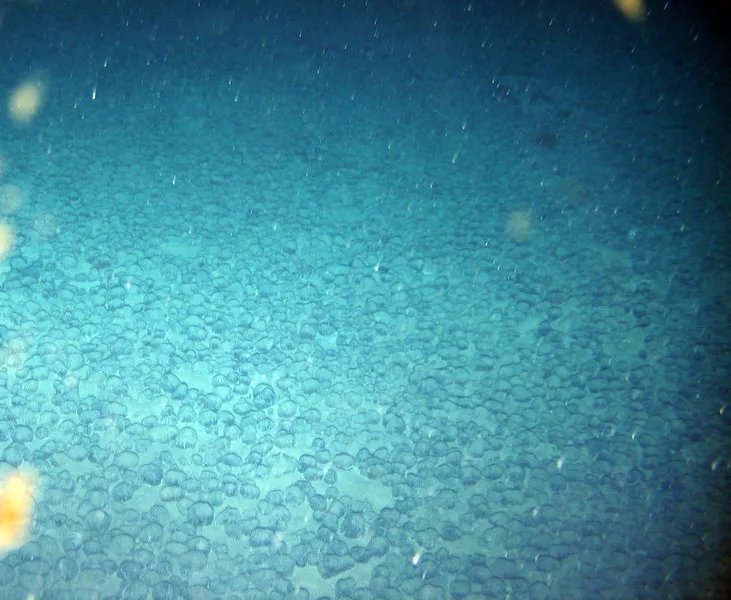An Underwater Field of Weird Metal Balls Is a Key to Both Past And Future
A huge deposit of manganese nodules beneath the Atlantic might be a potential source of highly prized rare earth metals
/https://tf-cmsv2-smithsonianmag-media.s3.amazonaws.com/filer/29/3f/293f84bf-f1e7-4d34-8dd3-1abe64de9837/nodules_42-59773355.jpg)
Back in January, while a team of German scientists was out in the tropical Atlantic trolling the deep sea floor for organisms, their epibenthic sled—used to take images and collect biological samples—seemed to get snagged on something. They pulled it up, and when it surfaced, the collection net contained strange metal orbs—dense and heavy and ancient.
But what the seabed photo had to show was even more exciting:

They had found a vast field of the metal balls—the largest deposit of manganese nodules to ever be found in the Atlantic.
"Manganese nodules are found in all oceans. But the largest deposits are known to occur in the Pacific. Nodules of this size and density in the Atlantic are not known," explained the expedition’s lead scientist, Colin Devey, in a press release.
Though this deposit consists of orbs that range from golf ball to bowling ball size, most manganese nodules are flatter lumps. They’re “formed of layer upon layer of metal ore that slowly crystallizes around a core” that may be a “fossil, a rock or fragment of another nodule,” LiveScience reports. Beyond manganese, they may consist of other metals like cobalt, copper or zinc.
The nodules’ composition makes this find a possible boon for tech companies. As Popular Science points out, the balls are “a potential source of the rare earth elements that companies use to manufacture high-tech electronics, like smartphones.” Science has known about this possibility for some time, but the difficulty in reaching such deposits, which are typically found beneath 1,600 and 1,800 feet of water, was prohibitive to further exploration.
But last summer, the UN handed out the first deep sea mining permits, opening the field for companies seeking the highly valuable rare earth metals. Little is known about the environmental risks of deep sea mining, though a discovery of this kind may provide a platform for experimentation.
Scientists also have cause to be pretty excited about the mega-collection of manganese nodules. The pearl-like balls are believed to form so slowly that they gain only millimeters over millions of years. That means that their layers hold vital info on extremely ancient environmental conditions. These weird balls may contain all kinds of new information about Earth’s history.
/https://tf-cmsv2-smithsonianmag-media.s3.amazonaws.com/accounts/headshot/lauraclark.jpeg)
/https://tf-cmsv2-smithsonianmag-media.s3.amazonaws.com/accounts/headshot/lauraclark.jpeg)